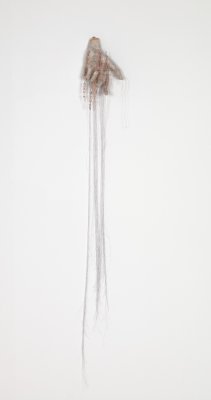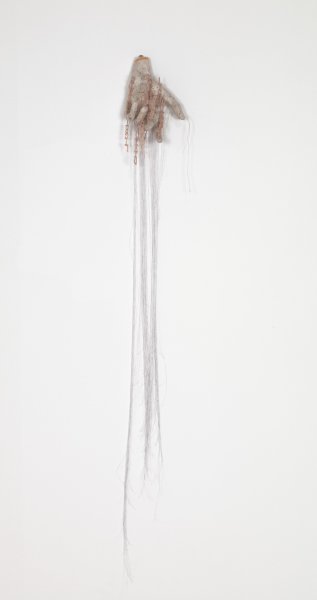About the Artist
Born in Bronxville, New York, in 1950, Lesley Dill studied English and taught before becoming an artist in the 1980s. With her knowledge of literature, Dill explores the influence words have on an artist and the visual appeal of text in her artwork. Much of Dill’s work is text-based. In discussing the influence of text, she has stated, “Language is the touchstone, the pivot point of all my work.”
Themes featured in Dill’s work, which is created with mixed-media materials, include the relationships between language, body, emotion, and experience. Language also adds layers of meaning to her artwork, especially the poetry of Emily Dickinson. Spiritual elements in Dill’s work reflect her travel and studies of Indian culture and traditions.
In addition to her sculptural work, Dill is a photographer and performance artist. She also created and directed an opera, Divide Light, based on the language of Emily Dickinson.
About the Art
Divide Light #2, 2002, includes words from the poet Emily Dickinson. The title comes from Dickenson’s poem “Banish Air from Air . . . ,” which begins, “Banish Air from Air – / Divide Light if you dare –.” A part of a series called “Divide Light,” the words “divide” and “light” are created out of paper and featured on a sculpturally rendered hand. The hand is a cast of Dill’s left hand and made from a decorative Japanese poster called chiri. The words, also made from chiri, are spelled vertically and in shades of brown as the result of being stained by tea. Multiple bunches of thread hang two-to-three-feet down off of the hand. Dill was inspired by the expressive Indian tradition of using henna, made from leaves of shrubs and used to dye skin and hair, as body decoration. In the Indian tradition, henna is used to draw elaborate designs on hands. In Divide Light #2, Dill replaces traditional henna designs with text.

